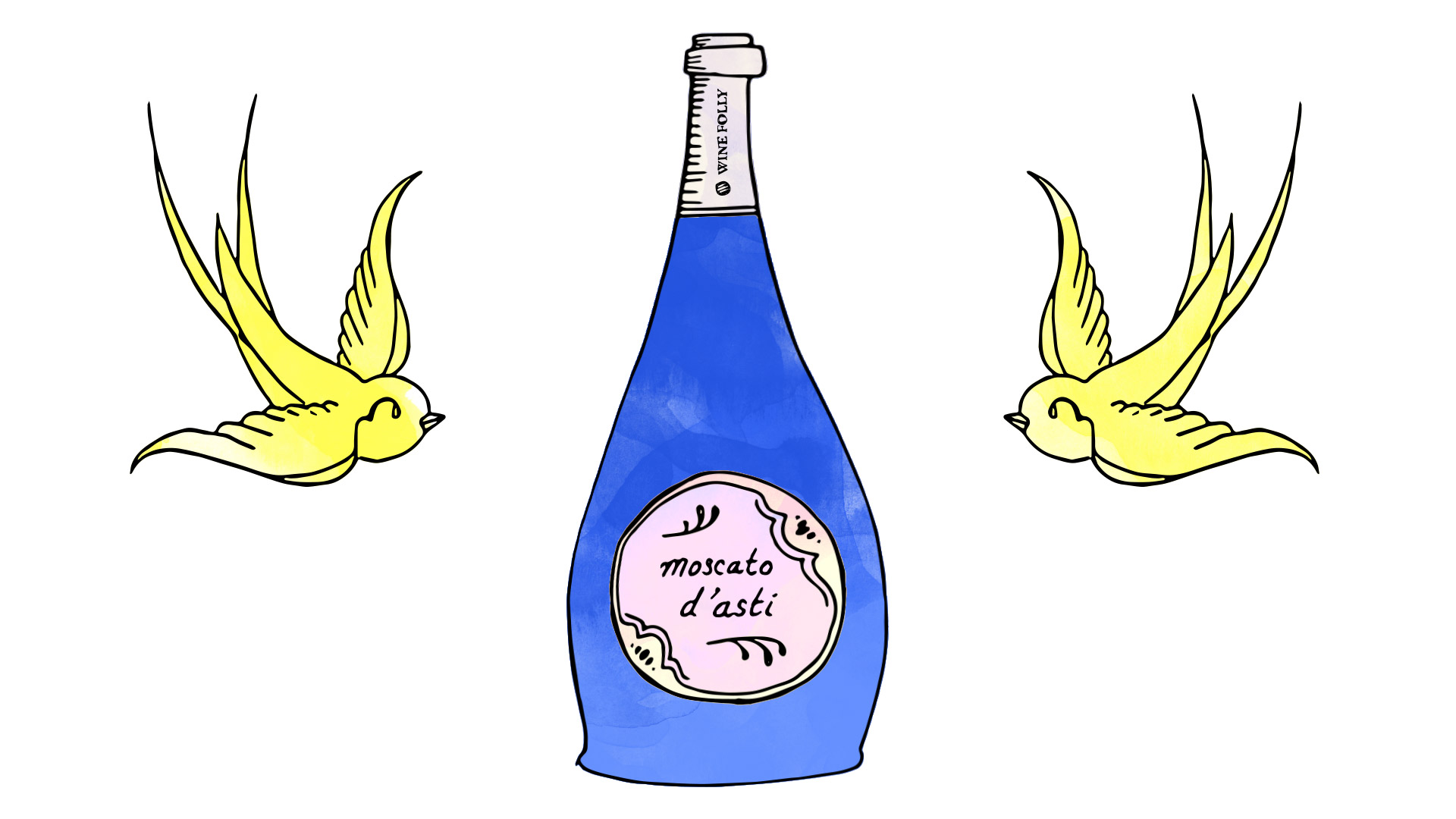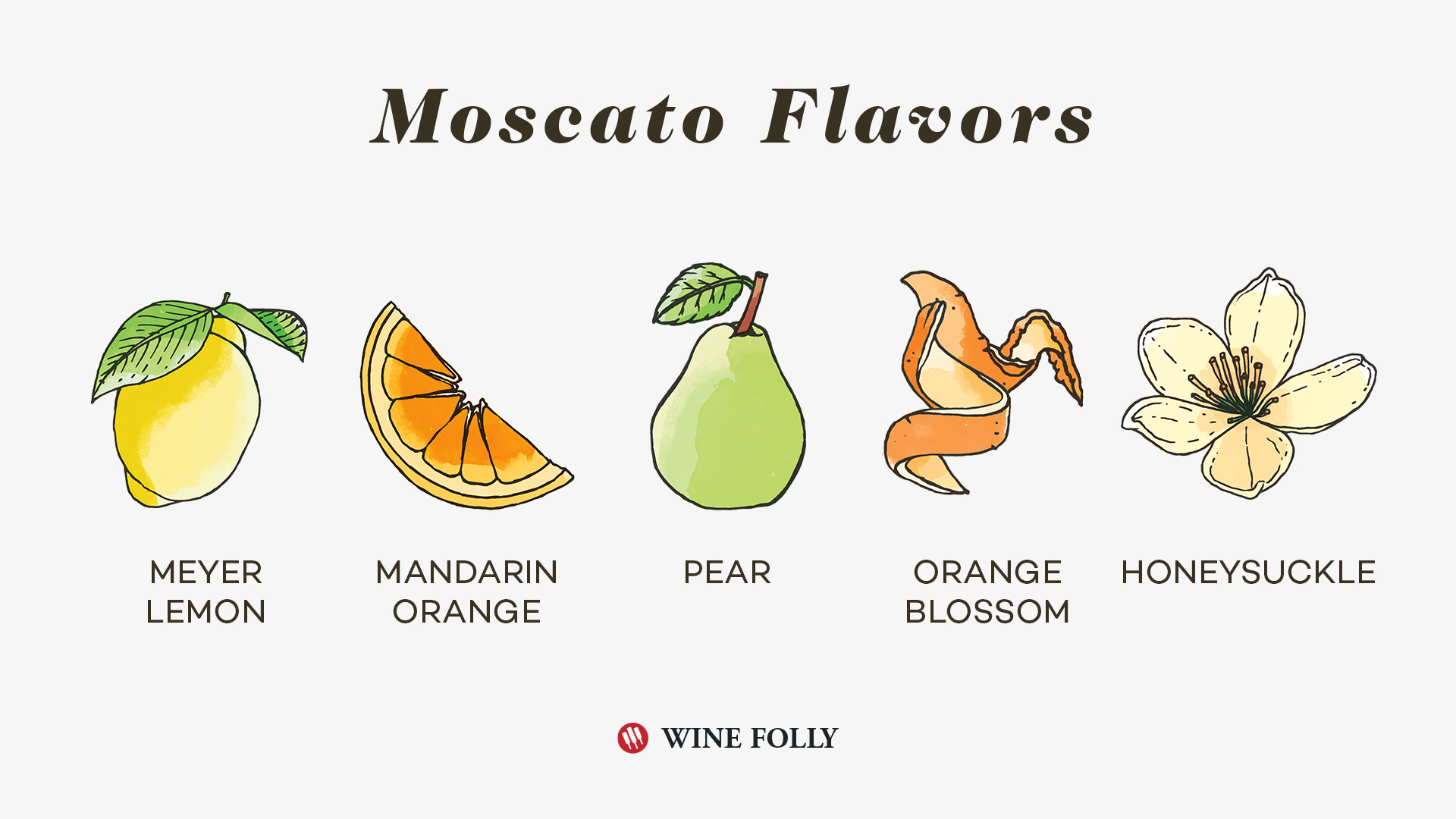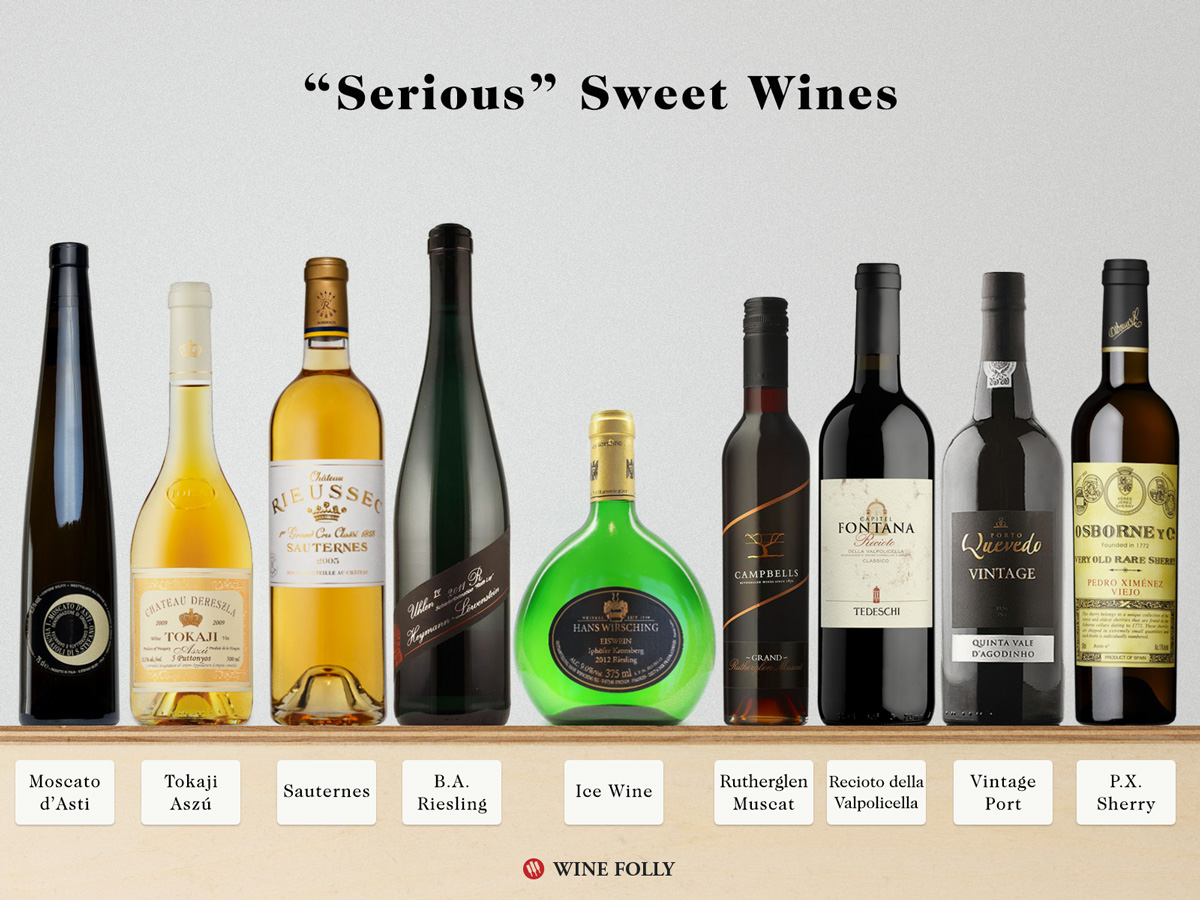Who can resist those brilliant blue bottles?
It’s hard not to fall in love with Moscato d’Asti. This perfumed, sweet Italian white wine is well-loved by wine drinkers of all kinds. Why? Simple: it’s so easy to drink! Of course, if you go beyond the blue bottle bling, you’ll find Moscato d’Asti is much more sophisticated than you might think.
Moscato d’Asti has Italy’s top DOCG wine classification and is made with Moscato Bianco (aka Muscat Blanc à Petits Grains) – a grape that’s a thousand years (or so) older than Cabernet Sauvignon.
Moscato d’Asti Taste and Flavors
Expect sweet aromas of peaches, fresh grapes, orange blossoms, and crisp Meyer lemons. The flavor tingles on your tongue from acidity and light carbonation. The half-sparkling style (in Italian: frizzante) gives the perception that Moscato d’Asti is just lightly sweet. However, the typical bottle of Moscato d’Asti has around 100–150 g/L of residual sugar (comparatively, a can of Coke has about 115 g/L of RS).
The wine may be sweet, but alcohol levels are surprisingly low! Moscato d’Asti are typically just 5.5% alcohol by volume (ABV). To put that into perspective, the average bottle of wine has 12% ABV. For this reason, Moscato d’Asti is a great choice for light drinkers.
Serving Recommendations
- Serve chilled (38–50 ºF)
- White wine glass or tulip sparkling wine glass
- Drink the latest vintage (Drink it young and fresh!)
“Nutrition” Facts
- Average Calories: 102 calories (from alcohol and sugar – per 5 oz. serving)
- Average Carbs: 13.5 g (from sugar – per 5 oz. serving)
- Recommended Serving Size: 5–10 oz.
Note: Technically, wine isn’t nutritious. Recommended serving size is based on what the National Cancer Institute recommends to maintain a moderate drinking lifestyle.
Moscato d’Asti Brands to Try
We asked several amazing sommeliers (aka “kickass wine picker-outers”) for recommendations of great Moscato d’Asti wines to try. You will love these wines.
-

Michele Chiarlo “Nivole” Moscato d’Asti
“Bursting with bright peach and white blossom notes, sky high acidity, light effervescence, and sweetness that lies perfectly in balance. Moscato with cheeses and quince, a fruit salad drizzled with maple syrup, or even for breakfast in lieu of that mimosa… an iconic producer, Michele Chiarlo makes Nivole, a single vineyard expression of pure joy in a perfectly sized 375mL bottle. Cin cin!”
–Haley Mercedes, Blue Blood Steakhouse, Toronto, Canada
-

Paolo Saracco Moscato d’Asti
“Unfortunately, Moscato d’Asti is an eno-Rodney Dangerfield (It just doesn’t get no respect). Frequently confused with the fully bubbled, volume produced, and often soapy tasting Asti (the wine formerly known as Asti Spumante), this lightly bubbled (frizzante) take on Moscato Bianco a is the pace car in the race for what great Moscato should be—impeccably balanced, and replete with intoxicatingly effusive notes of peach, lychee, and ripe tangerine. Tickling the tongue with a gentle fizz, this offering from Paolo Saracco, Piedmont’s “Maestro of Moscato”, is sublime and considered a benchmark.”
–Evan Goldstein, Full Circle Wine Solutions, San Francisco, CA
-
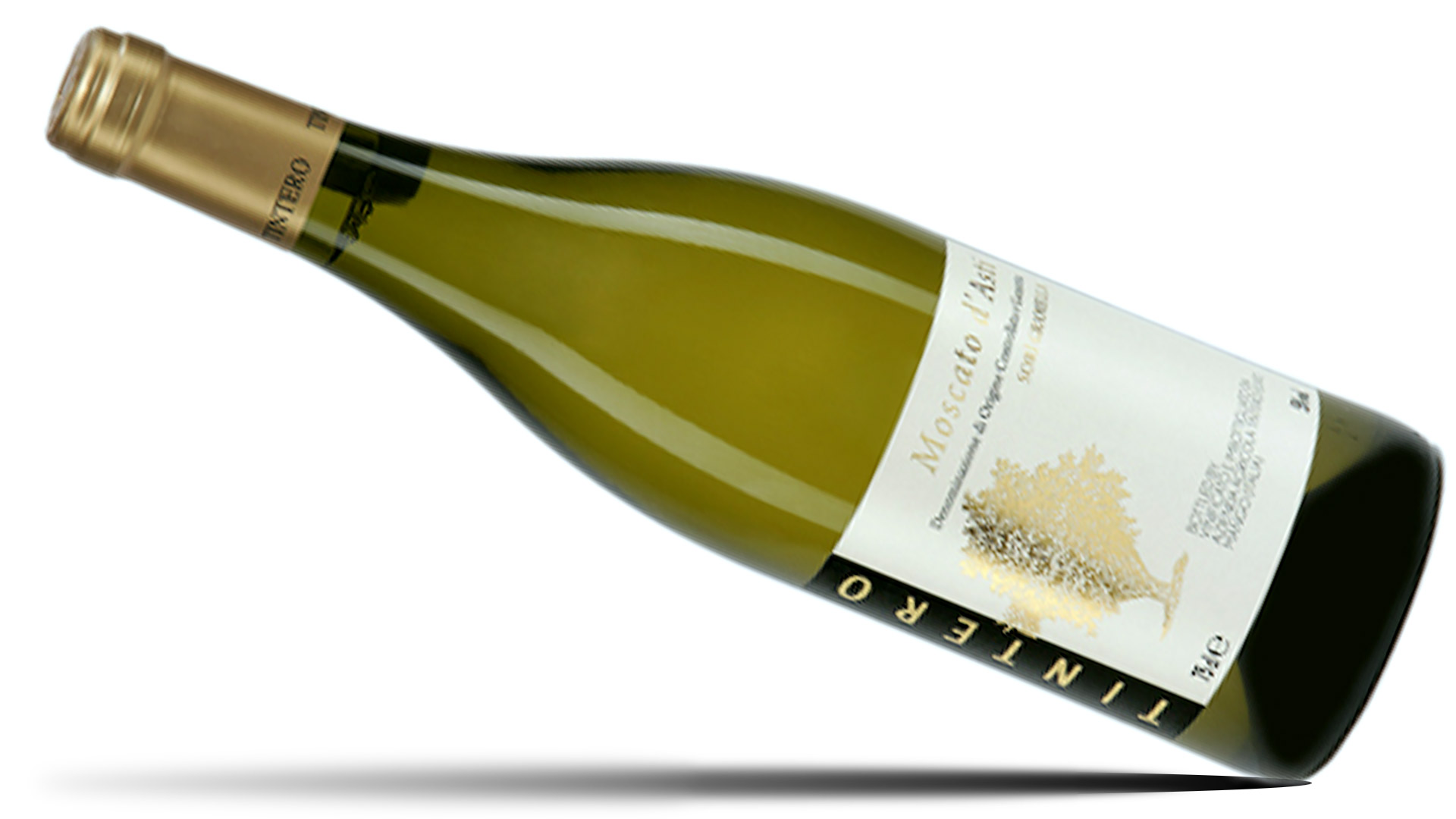
Elvio Tintero “Sori Gramella” Moscato d’Asti
“A delightful wine to drink, this slightly frizzante wine is one of the driest moscatos out there- bursting with gobs of peaches, apricots and white flowers. Based in Margo, the heart of moscato country, Marco Tintero is the fourth generation to make wines at the family estate that has been organic since the 1930s! Their moscato is all estate fruit, from their sun-soaked vineyard of sori gramella which is incredibly steep and must be farmed by horse and hand. The resulting wines are a perfect combination of irresistibly cheerful and staunchly traditional.”
–Victoria James, Cote, New York City, NY
-

Elio Perrone “Sourgal” Moscato d’Asti
Best panna cotta pairing ever. Fizzy sweet with creamy delicious. Trust me, just try it.
–Matt Stamp, Compline Wine Bar, Napa, CA
Moscato d’Asti Is An Important Italian Wine
Moscato d’Asti was classified a DOCG (Denominazione di Origine Controllata e Garantita) in 1993. DOCG status certifies a wine comes from a specific place, is made in a specific way, and uses Italy’s classic grapes. Of the Italian wine classification tiers, DOCG is the highest. (There are 4 tiers in all.) And, it’s a pretty exclusive group; there are just 78 DOCGs in Italy.
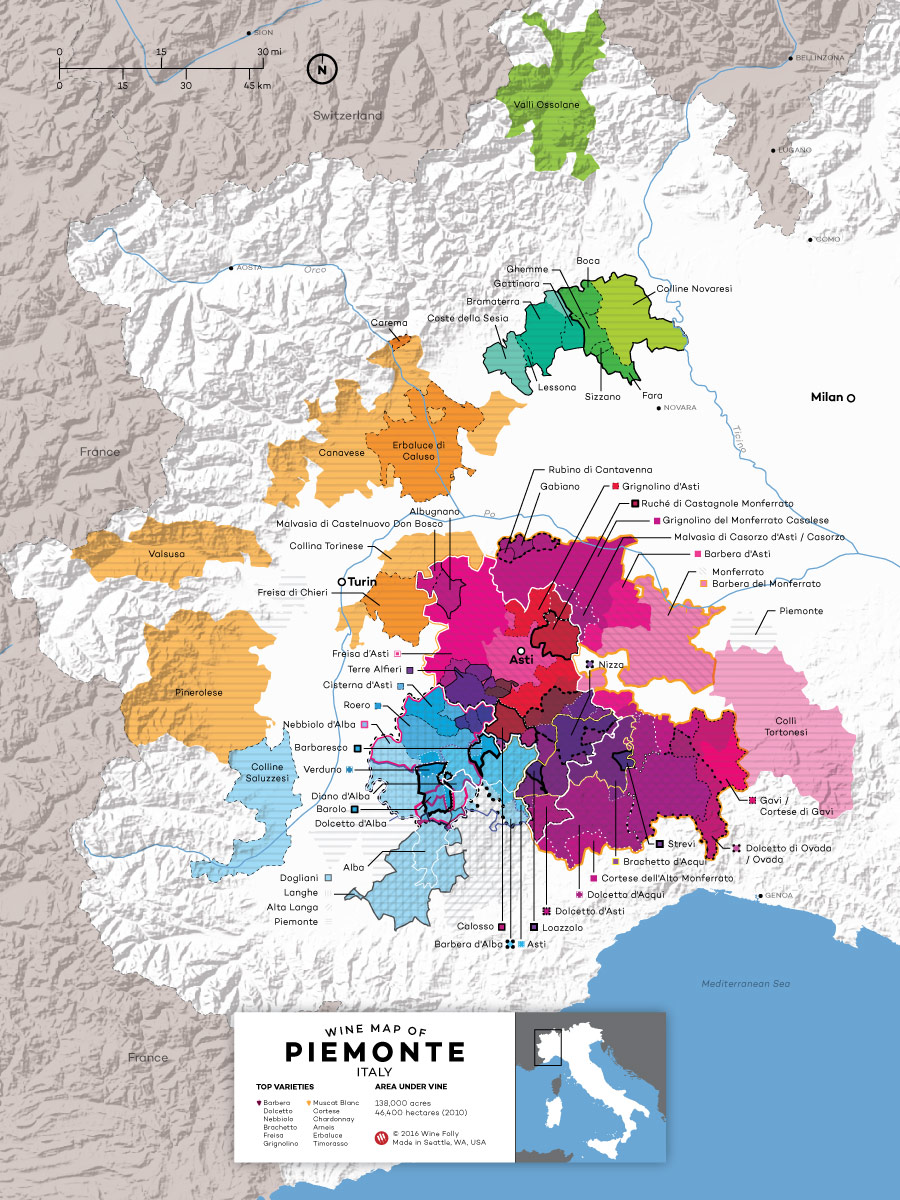
Piedmont Region of Italy
Moscato d’Asti means “Moscato of Asti” and the Asti region can be found in Piedmont, Italy. This region produces several Moscato-based wines worth checking out.
- Moscato d’Asti Vendemmia Tardiva: A rare late-harvest style of Moscato d’Asti with higher alcohol and sugar content (a minimum of 11% ABV).
- Asti DOCG: the fully sparkling or “spumante” (“spoo-mon-tay”) version of Moscato d’Asti. Bubbly and sweet!
- Loazzolo DOC: A 100% Moscato wine that’s available in a late-harvest style (aka Vendemmia Tardiva) and that’s sweetened from noble rot. Late-harvest Loazzolo has higher alcohol and sugar content (a minimum of 11% ABV).
- Strevi DOC: Another unique sweeter style made with partially dried grapes in a technique called “passito.” This wine is rich and sweet!
- Colli Tortonese Moscato DOC: A minimum of 85% Moscato Bianco (aka Muscat Blanc) from the far eastern side of Piedmont.
- Piemonte Moscato DOC: Decent base-model Moscato that’s made throughout Piedmont.
Despite the prevalence of Moscato in Piedmont, it doesn’t get as much attention as the dry red wines of the region. More fanfare goes to the wines of Barolo – high-tannin reds made with Nebbiolo grapes. Still, it’s nice to know that many of the top Barolo producers also make great Moscato. So, even if Moscato doesn’t get talked about by most pros, it’s actually taken quite seriously by Northern Italy’s top producers. The more you know!
9 Serious Sweet Wines
Love sweet wines? So do we! Here are 9 sweet wines that prove this style is not just a phase for beginners.

